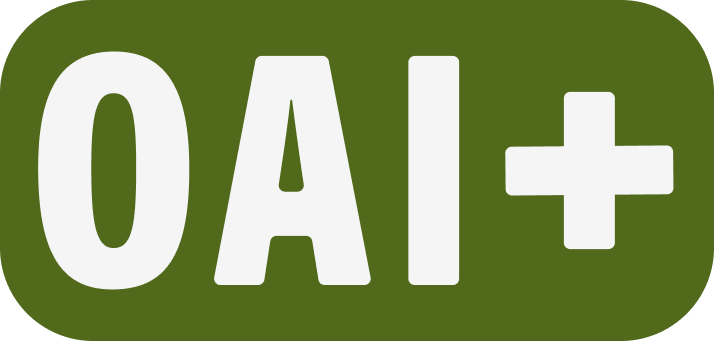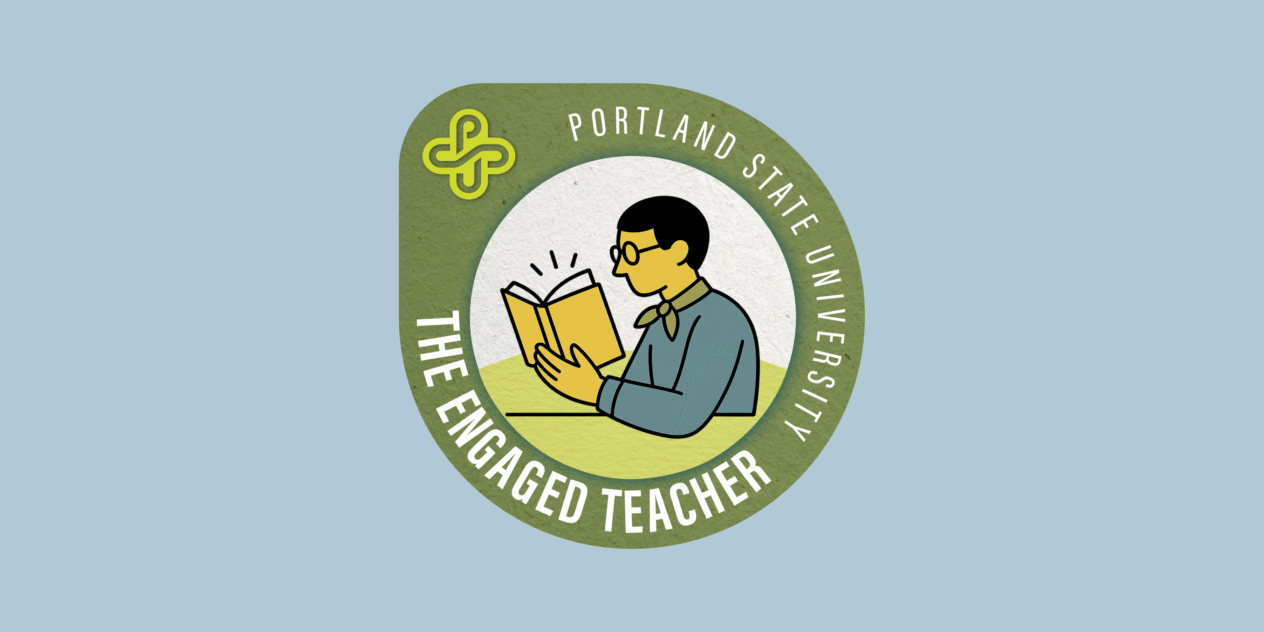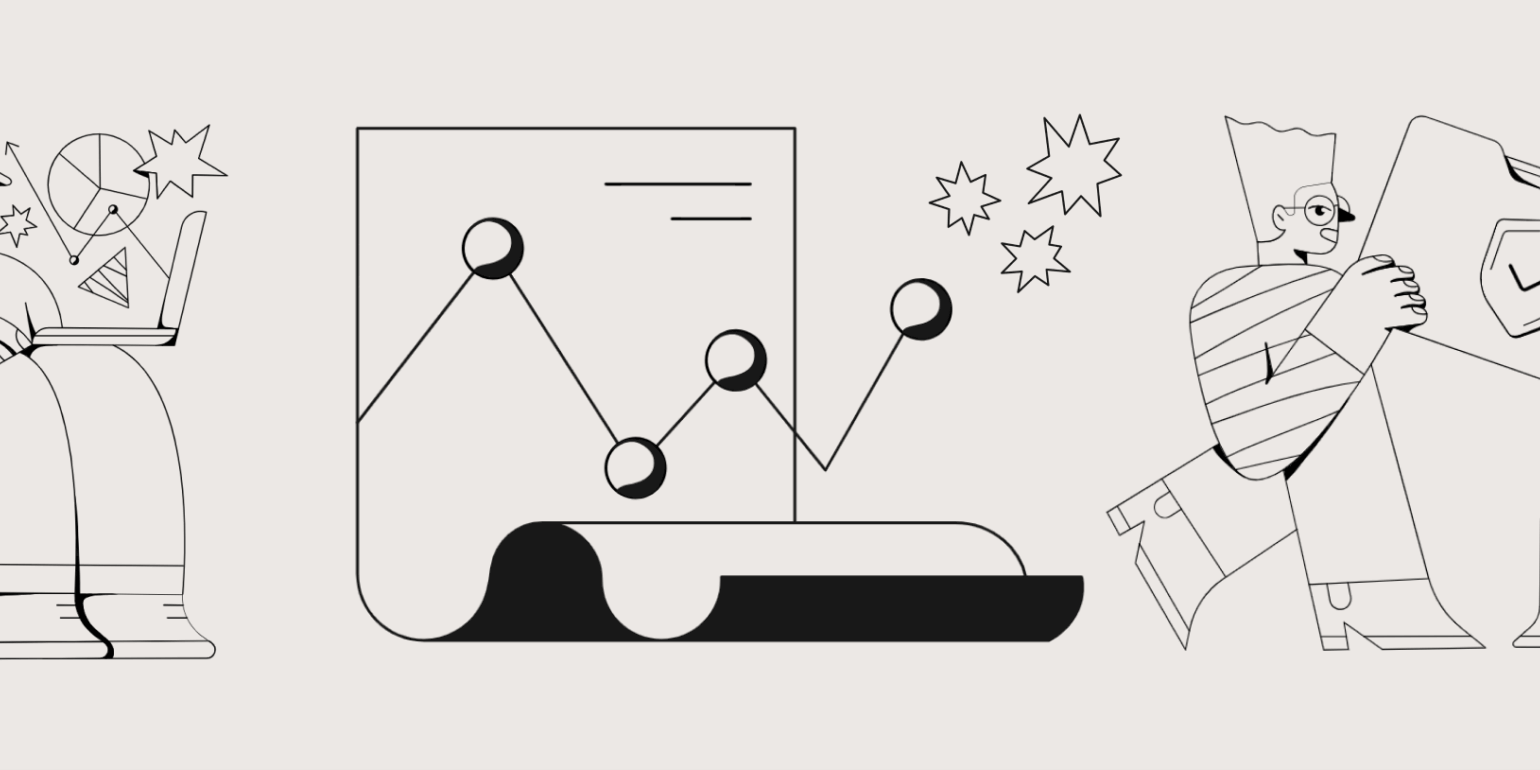Design effective assessments
A foundations guide for Portland State faculty
Contributors:Raiza Dottin, Megan McFarland
Assessment plays a vital role in higher education, serving as a bridge between teaching practices and student learning outcomes. At its core, assessment refers to any activity, assignment, or tool that evaluates what students have learned and how they apply that knowledge. Assessments can take many forms—exams, projects, papers, reflections, and other course assignments. Effective assessment helps us identify where students are excelling, where they may need additional support, and how we can adapt our teaching practices to meet their needs. In this article, you will find concrete strategies and examples to refine your teaching approaches, improve course content, and promote student success through effective assessment.
What is assessment design?
Assessment design involves the intentional planning and structuring of activities, assignments, and tools that measure student learning and evaluate the effectiveness of educational programs. While assessment itself includes a range of practices—from direct evaluations of student work to indirect measures like surveys and reflections—assessment design focuses on aligning these assessments with your course learning objectives. Thoughtful assessment design ensures that the methods you choose provide meaningful insight into student progress and that your instructional strategies effectively support the outcomes you want for your students.
Assessment is the process of gathering and analyzing evidence to understand and improve student learning and academic programs.
Why is quality assessment design important?
Assessment is a cornerstone of quality education, providing critical insights into the efficacy of teaching methods and how well course objectives align with student needs. It helps identify learning gaps, refine instruction, and support continuous improvement. Notably, assessment promotes transparency and accountability—ensuring students, faculty, and institutions can work toward shared goals.
As told by an instructor:
“Incorporating ongoing feedback into my course design has been invaluable. I ask students to record reflections every two weeks responding to four prompts—commenting on content and giving feedback on what’s working or not. I also name my positionality and reassure students that I truly use their input to improve their experience. In ED 519: Inclusive Secondary Classrooms, their feedback helped me diversify readings and refine a cross-teaching assignment to encourage student agency and self-directed learning through authentic learning tasks. Afterward, I asked if they found it useful and whether they’d do it again. The overwhelming response was yes—which genuinely surprised me! I’ll definitely continue this practice.”
- Grant Scribner, Adjunct Faculty, PSU College of Education
As told by an instructor:
“Incorporating ongoing feedback into my course design has been invaluable. I ask students to record reflections every two weeks responding to four prompts—commenting on content and giving feedback on what’s working or not. I also name my positionality and reassure students that I truly use their input to improve their experience. In ED 519: Inclusive Secondary Classrooms, their feedback helped me diversify readings and refine a cross-teaching assignment to encourage student agency and self-directed learning through authentic learning tasks. Afterward, I asked if they found it useful and whether they’d do it again. The overwhelming response was yes—which genuinely surprised me! I’ll definitely continue this practice.”
- Grant Scribner, Adjunct Faculty, PSU College of Education
How to design quality assessments
In this section, we apply the principles of backward design, an approach that begins by identifying desired learning outcomes before developing assessments and instructional strategies to support those goals (Wiggins & McTighe, 2005).
1. Define clear learning objectives
Clear learning objectives, also sometimes referred to as “learning outcomes,” clarify what students should know or be able to do by the end of a lesson, module, or course. Well-crafted objectives use measurable verbs and focus on specific knowledge or skills.
Start with course goals: Identify the overarching goals of the course by asking yourself, “What should students know, do, or believe after completing this course?” In many cases, course-level learning objectives are set at the department or university level—such as through Faculty Senate-approved curriculum—and may not be easily changed. However, you can still design assessments and assignments that align with these goals while tailoring the day-to-day learning activities and module-level objectives to your course context. Focusing on what success looks like for students in your particular classroom can help make assessment design more actionable and relevant.
Break goals into specific outcomes: Use frameworks like Bloom’s Taxonomy or Fink’s Taxonomy to write specific, measurable, and student-focused learning outcomes (Fink 2013).
- Instead of: “Students will understand ecosystems”
- Use: “Students will analyze the interdependence of organisms in ecosystems using case studies.”
Use the ABCD Framework: Ensure each learning outcome specifies:
- Audience: Who is learning? (e.g., “students”)
- Behavior: What will they do? (e.g., “analyze ecosystem dynamics”)
- Condition: Under what context? (e.g., “using case studies”)
- Degree: How well must they perform? (e.g., “apply principles accurately in 3 out of 4 examples”).
Limit the number of objectives: Focus on 3-7 outcomes per course to keep assessment measurable
Example learning objectives
Students will…
- Identify and explain the key components of the U.S. Constitution.
- Analyze primary source documents to construct a historical argument.
- Evaluate the credibility of scientific research articles.
2. Align assessments with learning outcomes
In assessment, alignment means that the task students complete directly matches what the learning outcome says they should demonstrate.
Match each outcome with an assessment:
- Outcome: “Evaluate research methods” → Task: critique a research article
- Outcome: “Demonstrate effective oral communication” → Task: deliver a presentation
Use the right type of assessment:
- Direct assessments (e.g., papers, projects) measure observable skills.
- Indirect assessments (e.g., surveys, reflections) offer insight into student attitudes or perceptions.
Ensure appropriate scaffolding: Lectures, activities, and readings should prepare students for assessments. For example, if students must write a research paper, include instructional support on research and writing.
Review and adjust: Use student feedback, reflections, and peer review to ensure assessments are effective.
Want to look at an example?
Check out this example of an authentic assessment that is well-aligned to course learning outcomes. This example is of an Assistive Technology Implementation Assignment and was contributed by Megan McFarland, adjunct professor in Portland State’s College of Education.
Resources for aligning assessments
3. Use a variety of assessment types
Assessment variety includes differences in purpose, cognitive demand, deliverable, and format.
Include both formative and summative assessments:
- Formative assessments: Use low-stakes quizzes, draft submissions, or in-class activities to provide ongoing feedback. These help identify and address learning gaps before final assessments.
- Summative assessments: Use exams, final projects, or presentations to evaluate students’ mastery of course content.
Vary cognitive demands: Balance assessments across Bloom’s levels of complexity. For example:
- Lower level: Multiple-choice quizzes for “Remembering” and “Understanding.”
- Higher level: Essays or case studies for “Analyzing” and “Evaluating.”
Use authentic assessments: Design assignments that simulate real-world tasks, such as conducting interviews, solving case studies, or creating portfolios, to promote deeper engagement.
Diversify formats: Incorporate a mix of traditional (e.g., essays, tests) and creative (e.g., multimedia presentations, group projects) assessments to cater to different learning styles.
Assessment type examples
These PSU examples show varied formative and summative assessments across different course contexts.
More on assessment types
4. Incorporate effective rubrics
Effective rubrics help communicate clear expectations and highlight the most important criteria for success.
Create rubrics for major assignments: Include specific criteria for each component of an assignment.
- For example, a research paper rubric could include categories like “Thesis Statement,” “Evidence Integration,” and “Organization.”
Use descriptive performance levels: Clearly describe what constitutes excellent, good, fair, or poor performance for each criterion.
- Instead of: “Needs improvement”
- Use: “Evidence is cited with proper formatting and integrated into the analysis.”
Provide rubrics in advance: Sharing rubrics when you assign a task helps clarify expectations.
Involve students: Allow students to contribute to rubric design, fostering transparency and ownership. For example, hold a class discussion to identify what constitutes good performance on a group project.
Use rubrics for feedback: Highlight specific areas where students excel or need improvement. This makes feedback actionable and encourages student growth.
Resources for incorporating rubrics
5. Analyze and apply assessment data
Use assessment data to identify learning patterns and make adjustments, both during the term and in future terms.
Collect and organize data: Gather results from both formative and summative assessments. Use tools like gradebooks, surveys, or spreadsheets to track performance trends.
Identify patterns and gaps: Analyze results to determine which outcomes students struggled with. For instance, if most students performed poorly on a research paper’s “Evidence Integration” criterion, review whether the course sufficiently taught this skill.
Adjust instruction:
- Revisit difficult topics
- Add practice opportunities
- Rebalance assessment weights if needed
Refine course design: For example, if students consistently underperform on oral presentations, consider adding a formative practice round with peer feedback before the final presentation.
Communicate changes: Let students know how their feedback or performance has shaped your course.
More on analyzing and applying assessment data
6. Foster a culture of reflection
Reflection helps you and your students close the learning loop and build metacognitive skills that deepen insight and growth.
Incorporate reflection assignments: After major assessments, ask questions such as:
- What was challenging?
- What strategies did you use?
- How might you improve?
Model reflection as an instructor: Share your own reflections on teaching practices and how you adapt based on assessment results.
- For example, “I noticed the class struggled with concept X, so I will include more examples next term.”
Use reflection for metacognition: Encourage students to analyze their strengths and weaknesses.
- For example, have them identify which study strategies worked best for their midterm exam preparation.
Provide feedback on reflections: Highlight meaningful insights in students’ reflections and suggest actionable next steps.
Create a safe environment for reflection: Reassure students that reflections are low-stakes and growth-focused. Avoid grading reflections rigorously.
Resources for analyzing and applying assessment data
Examples of quality assessment design practices
Fink, L. D. (2013). Creating significant learning experiences: An integrated approach to designing college courses (Revised and updated ed.). Jossey-Bass.
Wiggins, G., & McTighe, J. (2005). Understanding by design (2nd ed.). ASCD.
You might also like
👋Need more help?
Submit a support request through our Faculty Support portal for assistance.
























































